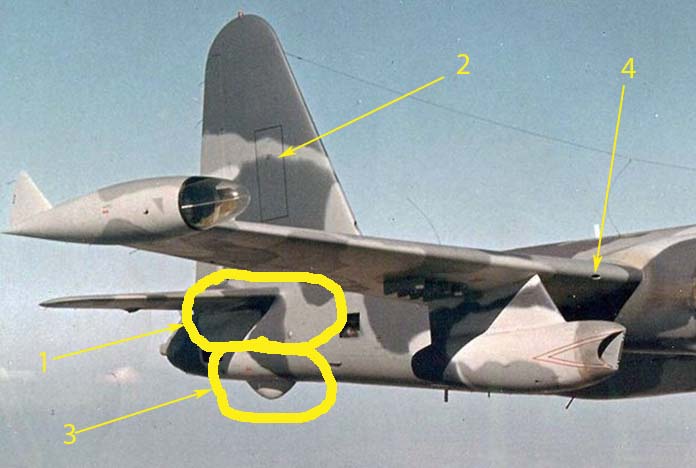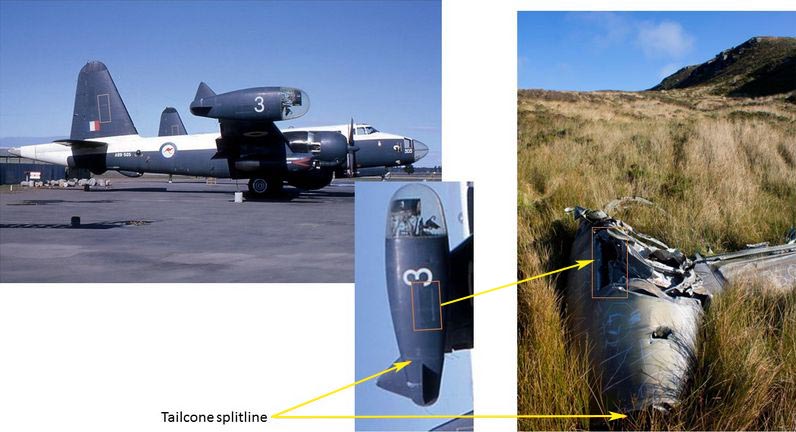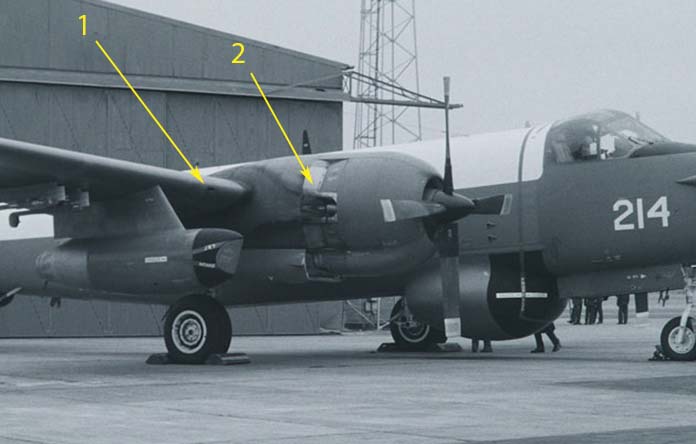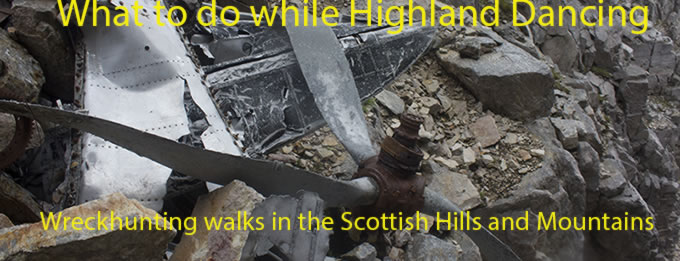Canny day oot!
Bristol Beaufort N1180 on Tor Morr.
Bristol
Beaufighter LZ455 on Beinn Bhreac.
Vickers Wellington LB137, Lockheed Neptune
WX545, AW Whitley P5041 and Boeing Chinnook ZD576 on Beinn na Lice.
Lockheed Hudson AE640 at Feorlan.
Avro Shackleton
WB833 on Glenmanuilt Hill.
(Distance covered = 8.9 mile/Ascent =+653 m)
The second last day of my 2017 walking holiday to Arran and Kintyre was my chance to go and visit a crashsite that had been on my bucket list since I first started going into the Hills looking for aircraft wreckage in the 1970's. Back then the only source of information I had was a book called 'High Ground Wrecks and Relics. This book listed a number of crashsites, giving their location, where known, and a brief description of what wreckage remained. One that stood out was a Lockheed Neptune that was listed in HGWR as "Whole Aircraft in large sections".
Thanks to my website I have had contact with several people who enjoy visiting crashsites for much the same reasons as myself, Heather calls them my 'website buddies'. One of them was meeting me on Kintyre for the weekend to accompany me on a visit to ten of the crashsites that are right down the bottom end of the Kintyre peninsula on the Mull of Kintyre.
Peugeot convention at the Mull of Kintyre
Lighthouse carpark. The sound of
two XUD9 lumps starting up in the morning was a joy to behold!
I was originally going to meet Stuart my 'Website Buddy', at the docks in Campbeltown on friday evening as he was catching the passenger ferry over from his home in Northern ireland. Because of the atrocious weather being experienced on Kintyre on the thursday and friday the ferry was cancelled, mainly due to the high winds. Instead he caught the bigger boat to Stranraer and drove up to the Mull on Saturday morning.

The ferry from Northern Ireland to Campbeltown,
its small size explains why it was cancelled due to the poor weather.
As well as being a 'website buddy'' Stuart also helps me a lot with research and as he is an aircraft engineer he is particularly good at identifying some of the parts found at the crashsites. He'd been to some of the crashsites on the Mull of Kintyre before, so as well as having company I also had a guide.
Above and below:- Crashsite No1 of the day, Bristol Beaufort N1180 on Tor Morr.
The first crashsite on Tor Morr was a stone's throw from the little carpark above the Mull of Kintyre Lighthouse, it took so little time to reach it I didn't have time to take any photos on the way. The second crashsite over on Beinn Bhreac did involve a little bit of a walk and as the early morning mist lifted there was some nice views off to the south and the east on the way.
View south from the ascent of Beinn Bhreac.
Summit of Beinn Bhreac, the Beaufighter crashed beside the fence on the skyline, centre of the photo.
View east across Sanda Sound and Sanda Island.
Above and next two photos:-Crashsite of Bristol Beaufighter LZ455 on
Beinn Bhreac.
As well as finding the Beaufighter crashsite we investigated reports that an object believed to be the barrel from one of its cannon, was stuck vertically in the ground a little to the north. The object was easy enough to find but although it did look like some sort of gun barrel it was way to large to be from the Beaufighter.
Above and next 2 photos:- Mystery Gun Barrel/Drainpipe??
Finding the first two crashsites was simple, not only had I seen photographs of them on the internet but I also had a guide who had been to them before. This was not the case with the third crashsite of the day, an Avro Anson on A' Chruach, about a mile to the north of the Beaufighter. Although we had a grid reference it was only 6 digits which meant a 10,000 square metre area to search and we didn't find anything. After an intial search we stood at the end of a long gully having a discussion where to search next, when I returned home I was given a 10 digit grid ref and a photo of the Anson wreckage, in the background of the photo was the distinctive long gully we had stood beside. I would estimate that we were standing probably only 10 or 20 metres from the wreckage so were very unlucky not to spot it.
On route from Beinn Bhreac to A' Chruach.
Above and below:-On A' Chruach looking for the Anson.
Next on our agenda was the remains of a Vickers Wellington on Beinn na Lice, but before we reached that we came across a large lump of the Lockheed Neptune's rear fuselage which was a distance east from the rest of the Neptune wreckage.
Piece of Neptune rear fuselage.
View north from Beinn na Lice.
As with the Anson we only had a 6 digit grid reference for the Wellington and it was another one that Stuart hadn't previously been to, so it was fingers crossed that we had more luck with this one.
Above and below:-Scant remains of Wellington LB137, well hidden in the
deep heather.
After having a look at the remains of the Wellington we found a nice little hillock to sit on and have some bait, from there we could see the Chinook Memorial further down the hill, but between us and that were two more crashsites.
Bait time on Beinn ne Lice.
above and below:-Sitting on the little hillock looking back to the Wellington crashsite above and the Chinook memorial below.
Northern Ireland off in the distance.
Islay and Jura off in the distance.
Above and next 2 photos:- Heading across to crashsite number 4 and 5 of the day.
Pieces of Neptune wreckage.
The four crashsites on Beinn na Lice are very close together, indeed the Whitley and Neptune impact points are probably only a couple of hundred feet apart and pieces of Neptune are scattered all around the Whitley site. It may have proved difficult to discern what was Neptune and what was Whitley but I had planned ahead for this problem and fetched along an Aircraft Engineer.
Above and next two photos:-Crashsite of Whitley P5041 on Beinn na Lice.
The Whitley wreckage was concentrated in a small area next to a burn whereas the Neptune wreckage was scattered far and wide so it took quite a while to search around to find and photograph as many bits as possible.
Above and next 2 photos:-Section of the Neptune's tail (labelled 1 on the photo of an intact Neptune below), the large tailfin lies in the heather close by.

The location of some of the parts found on Mull of Kintyre.
The Tailfin (labelled 2 on the photo above).
above and below:-Tail skid from underneath
the rear of the Neptune.
(Labelled 3 on the photo of the intact Neptune)
above and next two photos:- More pieces from the rear end of the Neptune.
Above and next 2 photos:-Remains of the starboard wingtip fuel tank.

Comparison photo courtesy of Stuart Whittaker.
Where the Neptune impacted the hill, a propellor lies in the foreground.
A large lump of wing lying above the impact point.
Engine mount and firewall.(Labelled 2 on the photo of an intact Neptune below)

Very large lump of port wing.
(Note the air intake on the leading edge,
the same intake on the starboard wing is labelled 1 on the photo above and
4 on the previous photo of the tail parts).
More wreckage photos
At the southern end of the trail of Neptune wreckage is this memorial, at it's base was a small wooden plaque laid by one of the crews grandchildren.
The Anson crashsite on A' Cruach was actually the farthest away from the carpark, so since we left there we had been walking back towards the cars, passing the other four crashsites on the way. So by the time we arrived at the Chinook memorial we only had a very short walk up the Lighthouse access road to get back to where we started from.
The large Memorial at the crashsite of Chinook
ZD576, the Neptune memorial can be seen on the hillside in the
background(red arrow), it was easy to spot on this day as the sun was
reflecting off the metal plaque.
Neptune
memorial taken from the Chinook memorial with a zoom lens.
Above and below:- Mull of Kintyre Lighthouse. I believe this is now holiday accomodation.
Once back at the carpark we still had enough time to relocate the cars a couple of miles back down the road to check out two more crashsites, both of which were only a couple of hundred yards walk. Finding somewhere to park on the single track road was a bit of an issue so we simply rammed the cars up onto the muddy grass verge at a spot where the road had a bit of an incline, safe in the knowledge that we could just roll back down the hill to prevent getting stuck in the mud.
Lockheed Hudson AE640 crashed in these trees
just below the cottage at Feorlan.
We did end up walking more than a couple of hundred yards to reach the Hudson crashsite at Feorlan as I'd spotted a track running down to the south of the crashsite so had figured by going in that way we could avoid doing battle with the thick bracken that hindered the approach from the north. A very deep gully put paid to that idea so we had to backtrack and come in from the north through the bracken.
Walking in from the south, pretty easy going until we got about 50 feet from the crashsite where we encountered a near vertical gully.
Walking in from the north through the bracken.
Only a scar and some tiny fragments at this one.
After the Hudson we relocated the cars again to visit the eighth and last crashsite of the day and used the gravity assisted parking method again. This time it was a very short and easy walk, which was just as well as the light was starting to fail.
Above and below:-Last crashsite of a very long but extremely enjoyable day
Avro Shackleton WB833 memorial on Glenmanuilt Hill.
